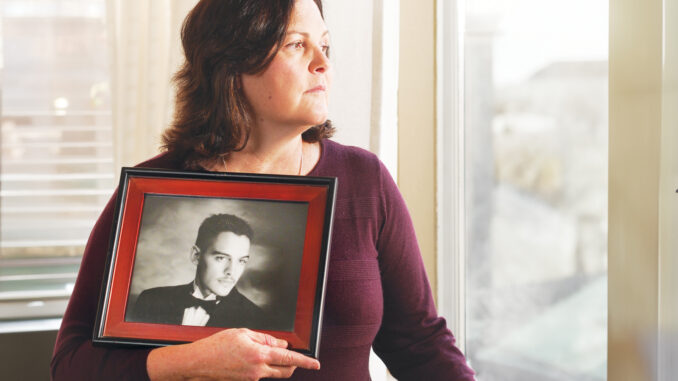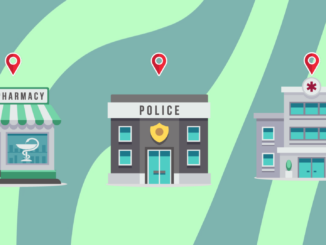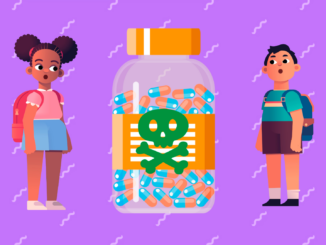
Son’s prescription medication addiction started with pills he found at home
by Michelle Carl
Sandra Chavez kept Vicodin in her kitchen. She kept it in the medicine cabinet, next to the Tylenol. Following a medical procedure such as a surgery or root canal, she would hold on to unused medication — just in case. But if she had known the danger at the time, she would have gotten rid of the drug, because it was the beginning of her teenage son Jeff’s prescription medication addiction.
“I didn’t make the connection,” says Sandra, who stressed to her children the ills of illegal drugs and alcohol. “You don’t think your child is going to become an addict [to prescription pills].”
Jeff Chavez was intelligent and artistic, with dark, soulful eyes. He loved science and his pet iguana. He was quiet, although his mother says people were drawn to him because of his sensitive nature.
“He was this beautiful person and it stole his beauty. It stole his health.”
Sandra Chavez, Mother
The summer after ninth grade, the Elk Grove High School student was attacked from behind by a group of unknown teens. He was knocked unconscious and suffered lost teeth and a broken jaw from the assault. His jaw was wired shut and he was in pain, so his dentist prescribed to him Vicodin.
“Life was never the same after that,” Sandra says.
Access to powerful prescription painkillers in the home can lead to abuse by teens, not to mention accidental poisonings in young children and the elderly.
According to a 2018 study by the National Institute on Drug Abuse, young adults between the ages of 18 to 25 have the highest rates of prescription drug misuse and that such misuse oftentimes leads to higher rates of abusing illicit drugs. A recent Stanford study found that prescription medicine is more widely abused by new substance abusers ages 12 and older than any other illegal substance. Studies have also showed that teens and parents mistakenly believe that prescription pills are safer than street drugs. But the reality is abuse of these drugs can be just as damaging and deadly.
Sandra first found out about her son’s opiate prescription medication addiction after he was arrested for possession of prescription pills that didn’t belong to him. Jeff was 21 and working for a utility company, making $80,000 a year. But he never had any money — it was going to buy pills.
Following his arrest, he confessed to his family that during high school he started using the Vicodin he found so easily around his home to deal with his social anxiety.
“He had charm and he had wit, and he was well-liked. He was considered a cool guy, but yet he had this private turmoil,” Sandra says.
His family helped him get treatment for his prescription medication addiction at multiple clinics. But after Jeff left another program before completion, Sandra cut off ties with her youngest son.
“He was this beautiful person and it stole his beauty,” she says. “It stole his health.”
Jeff’s drug use had escalated to heroin. He contracted hepatitis and MRSA from intravenous drug use. The next time Sandra saw her son, he was in a hospital in San Francisco, his organs ravaged by infection. He was on dialysis and so heavily sedated, she never got to speak to him. He died from multiple organ failure on June 7, 2012, at the age of 24.
“This is the ugly truth of it,” she says. “This is what happens.”
Although she feels the pain of her son’s death every day, she makes a point to tell everyone she can about his story — including parents, health professionals and students. She urges people to lock up their medications in a safe but wishes there were an easier way to get the drugs out of the house altogether.
“Once a doctor prescribes it, and a pharmacist dispenses it, it goes out into the community — and there has got to be some way that we get it back into safe hands,” Sandra says.
To keep your medications from being intentionally or accidentally misused, find a safe disposal drug take-back bin near you at medtakebackcalifornia.org.
Read more stories about med bins in California’s Central Valley, High Desert, Los Angeles/Ventura, North Central Valley, North Coast, Orange County, Rural Mountains, San Diego, South Central Valley.
Brought to you by the California Drug Take-Back Program and the California Product Stewardship Council.
Recent facebook posts from California Product Stewardship Council

The California Product Stewardship Council (CPSC) is a powerful network of local governments, non-government organizations, businesses, and individuals supporting policies and projects where producers share in the responsibility for managing problem products at their end of life.
CPSC is California’s thought leader and expert on Product Stewardship and the Extended Producer Responsibility (EPR) movement.
EPR enjoys the support of more than 26 million Californians. That’s nearly 70% of the state's population! Nearly 150 resolutions have been passed by California local jurisdictions and organizations supporting a more sustainable and toxic free environment through product stewardship. CPSC works closely with companies who have redesigned products for reuse as well as those who have established pilot or permanent collection programs with some sharing of costs with others in the product chain.
California Product Stewardship Council


